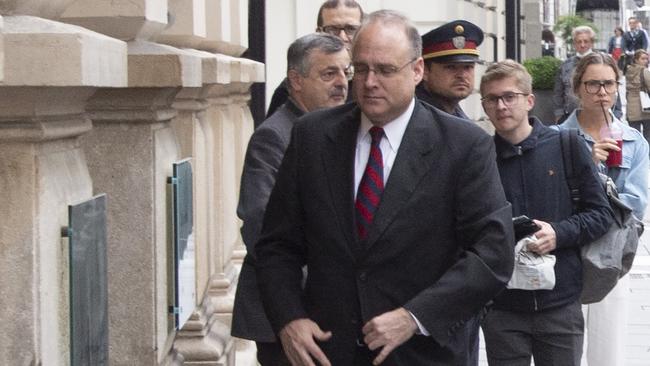Beijing trades barbs at nuclear arms talks in Vienna
US and China exchange barbs over Beijing’s decision not to join the negotiations on a new nuclaer arms treaty.

US and Russian negotiators held long-awaited talks on nuclear arms control on Monday, as the Trump administration presses for an ambitious new accord to replace the New START treaty, which expires in February.
Marshall Billingslea, the top US envoy on arms control, tweeted that his daylong meeting in Vienna with Russian Deputy Foreign Minister Sergei Ryabkov has been constructive. Technical working groups, he added, had been established, and the two sides had agreed in principle to hold a second round of negotiations.
One obstacle, however, immediately came to the fore when the US and China exchanged barbs over Beijing’s decision not to join the negotiations.
“China is a no-show,” Mr Billingslea tweeted before the meeting. “Beijing still hiding behind #GreatWallofSecrecy on its crash nuclear buildup, and so many other things.” To drive the point home, Mr Billingslea included a photograph showing empty seats with Chinese flags.
That drew a tart response from Fu Cong, the head of the arms control department at China’s foreign ministry.
“What an odd scene! Displaying Chinese National Flags on a negotiating table without China’s consent!” he tweeted.
“Good luck on the extension of New START! Wonder how LOW you can go?” “US’ performance art?” China’s Permanent Mission in Vienna chimed in on Twitter.
Russia’s ambassador to Austria, Dmitry Lyubinsky, later said the photo tweeted by Mr Billingslea was staged. No Chinese flags were in the room when the talks were carried out, as it was a meeting between Russian and US officials, he told RIA Novosti, the Russian state news agency.
The Twitter war between US and Chinese officials didn’t bode well for President Donald Trump’s goal of drafting a new accord that would limit all Russian, Chinese and US nuclear warheads.
Even without the debate over China’s role, the talks face substantial obstacles, including the US insistence that Russian short-range tactical systems be included in a future accord.
Mr Ryabkov suggested earlier this month that Moscow might consider the demand if it received “something really attractive in exchange”. While Mr Ryabkov didn’t define what Russia might expect in return, Moscow has long sought constraints on US missile defence programs and on US long-range conventionally armed missiles that Washington has steadfastly refused to constrain.
The Vienna talks took place as time is running out on the New START treaty, which cuts long-range US and Russian nuclear arms and provides for on-site inspections by the two sides.
The accord can be continued for up to five years by mutual consent and, speaking over the weekend, Mr Ryabkov said it was “right and logical” to do so.
Mr Trump, however, hasn’t said if he is prepared to extend the agreement. Some conservative US analysts assert that Washington should not do so unless Moscow signals it is prepared to include tactical nuclear weapons in a future accord.
There was no immediate announcement on when US and Russian negotiators might meet again, and the two sides appeared to have different expectations for the Monday session.
The Trump administration has cast the Vienna meeting as the start of a major new arms control negotiation. However, Russia’s Foreign Ministry described it as one in a series of periodic discussions on how to maintain stability in the nuclear arms race, including the issue of extending New START.
China’s refusal to join the talks in Vienna wasn’t a surprise. Beijing has repeatedly argued that its nuclear arsenal is far smaller than those of the US and Russia. But the Trump administration asserts China’s modest arsenal will at least double over the next decade and it is time for Beijing to come to the negotiating table. The US withdrew from the treaty on intermediate-range nuclear forces last year, alleging that Russia had violated the accord; Moscow followed suit.
The Wall Street Journal



To join the conversation, please log in. Don't have an account? Register
Join the conversation, you are commenting as Logout